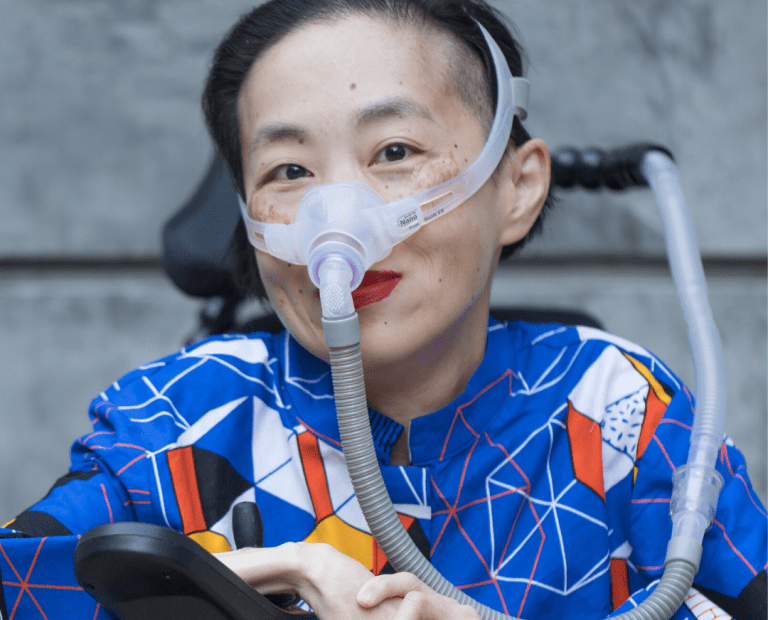On October 28, McGill’s Institute for Gender, Sexuality, and Feminist studies hosted a virtual fireside chat with author Alice Wong, as part of its Feminist and Accessible Publishing and Communications Technologies series. Wong is an activist, media maker, and one of the most influential champions of disability justice. The talk was moderated by professor Elizabeth Patitsas, and it gave students and faculty an opportunity to learn more about Wong’s latest anthology, Disability Visibility, as well as her views on disability justice, academia, and identity.
The Disability Visibility Project is dedicated to “creating, sharing, and amplifying disability media and culture.” Wong began this initiative in 2014 to show that disability must be a priority in all struggles against discrimination. Her new book is an anthology of first-person stories written by and for people with disabilities, and it discusses how disability intersects with movements such as Black Lives Matter and #MeToo. Wong highlights the idea that people with disabilities play a crucial role in social justice movements that often sideline disability; in fact, they’ve been contributing to them all along.
Wong’s anthology isn’t designed as a “Disability 101” course for those unfamiliar with disability justice. Her primary audience is people with disabilities, rather than non-disabled individuals and their perceptions of disability. The book challenges popular expectations of what disability literature should be, and celebrates disability culture and community. Wong describes her anthology as a space where people are given the opportunity to open up not only about their disability, but about their lives, passions, and interests. She centres personal narratives to illustrate that the personal is political, and to convey the importance of storytelling to the organization of political movements.
During the event, Wong mentioned that she felt privileged to land this book deal, as many people don’t have access to books at all. To mitigate potential accessibility obstacles, she has included several resources on the Disability Visibility website, in addition to a more affordable, online-only, plain language edition of the book. These measures ensure that education isn’t a barrier to readers. This circumvents a common pitfall of academia – literature about marginalized communities is often so complex and convoluted that the very people spoken about cannot derive any value from it.
Wong also urged academics to write in plain language, despite the pressure they may feel to write in a certain style in order to be taken “seriously.” She promoted reading formats that can reach a wider audience and that guarantee access to the work scholars are publishing. While her anthology does not include any peer-reviewed or “formal” scholarship, it remains filled with essential knowledge, and it can be used both for personal development and in a classroom setting. Above all, Wong emphasized the breadth of scholarship available on platforms like Twitter, and in other informal spaces like blogs – this is where people can find deliberate and careful dialogue that never makes it into peer-reviewed journals, especially among marginalized communities, which are underrepresented in academia.
Challenging academia and the concept of scholarly work can be useful for researchers and educators alike. When asked about how disability can not only be “tolerat[ed], but celebrat[ed] inside and outside the classroom,” Wong urged instructors to be creative when accommodating students, and to consider the structure of their lessons with care. She recommended adopting universal design principles when planning classroom interactions, instead of singling students out and publicly announcing their accommodations. Openly discussing disability and making it an explicit part of the curriculum can empower students with disabilities, especially if disability history and the contributions of people with disabilities are included in the syllabus. “We have to be ready,” Wong stated, “to challenge what is in our syllabi, what is in our history, [and] what is on our bookshelves.”
While the celebration of the disability community is undoubtedly important, it also raises questions about the construction of disability identity. Many individuals do not perceive themselves as disabled, and many wonder if they are “disabled enough” to belong to the community. But as Wong pointed out, “you don’t have to have a proud [disability] identity to be part of the community – you can be part of the community whether or not you use the word disabled.” The ableism embedded in our society gatekeeps access to disability identity, but a person’s journey with their own identity can often feel confusing and scary. Wong called for less judgement and “more flexibility and fluidity about who can be a part of the community.” Not everyone can receive a diagnosis, nor can they “flash a badge” to claim that they belong. But everyone needs a space where they can be heard, whether that’s in the disability community, or any other communities they may belong to.
Marginalized communities have survived, and even thrived in hostile environments for centuries – this is, Wong reminded the audience, a testament to our capacity to show up for one another.
To learn more about Disability Visibility and the resources mentioned above, visit https://disabilityvisibilityproject.com.

